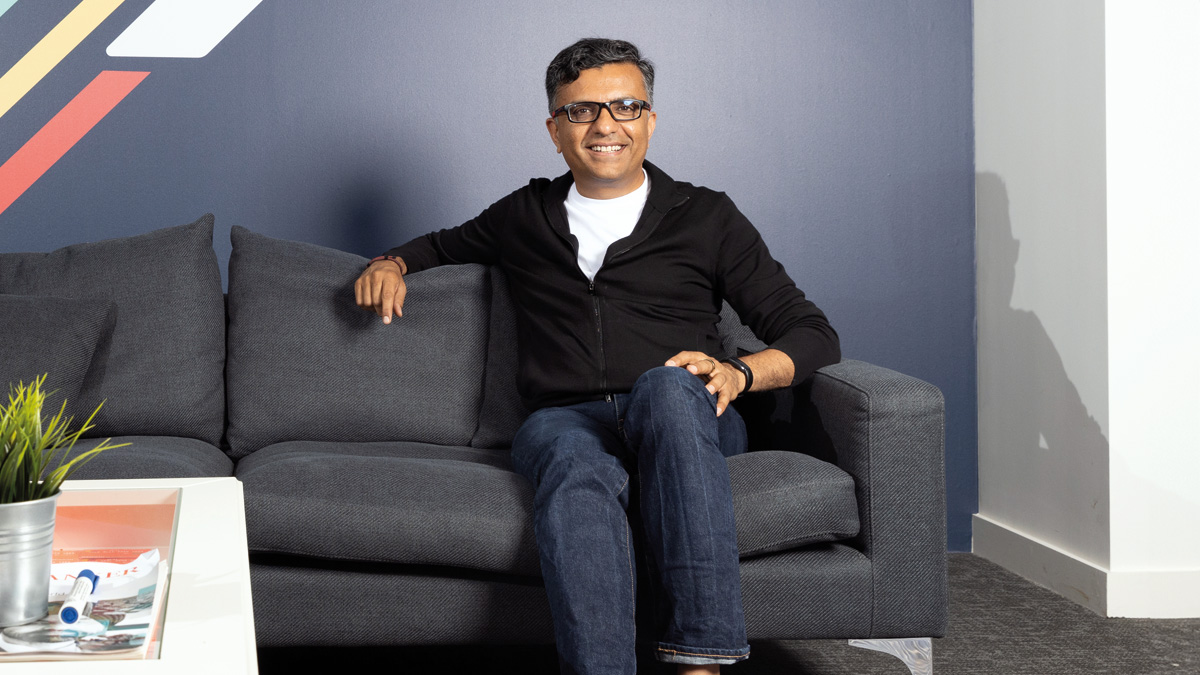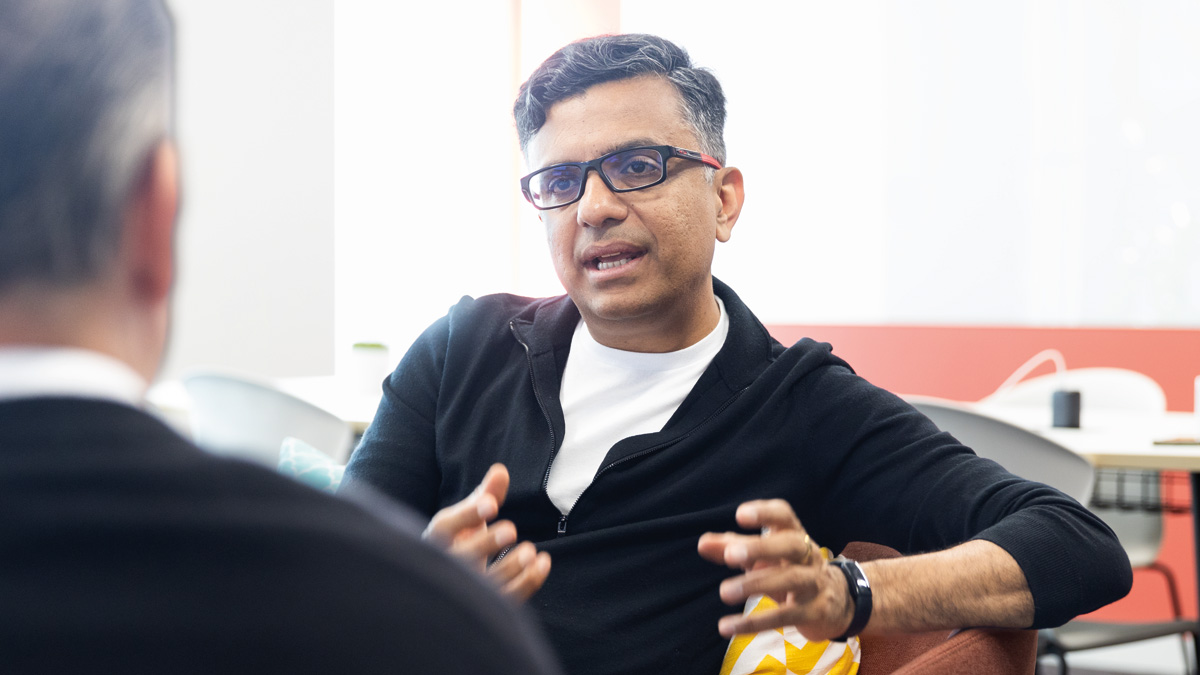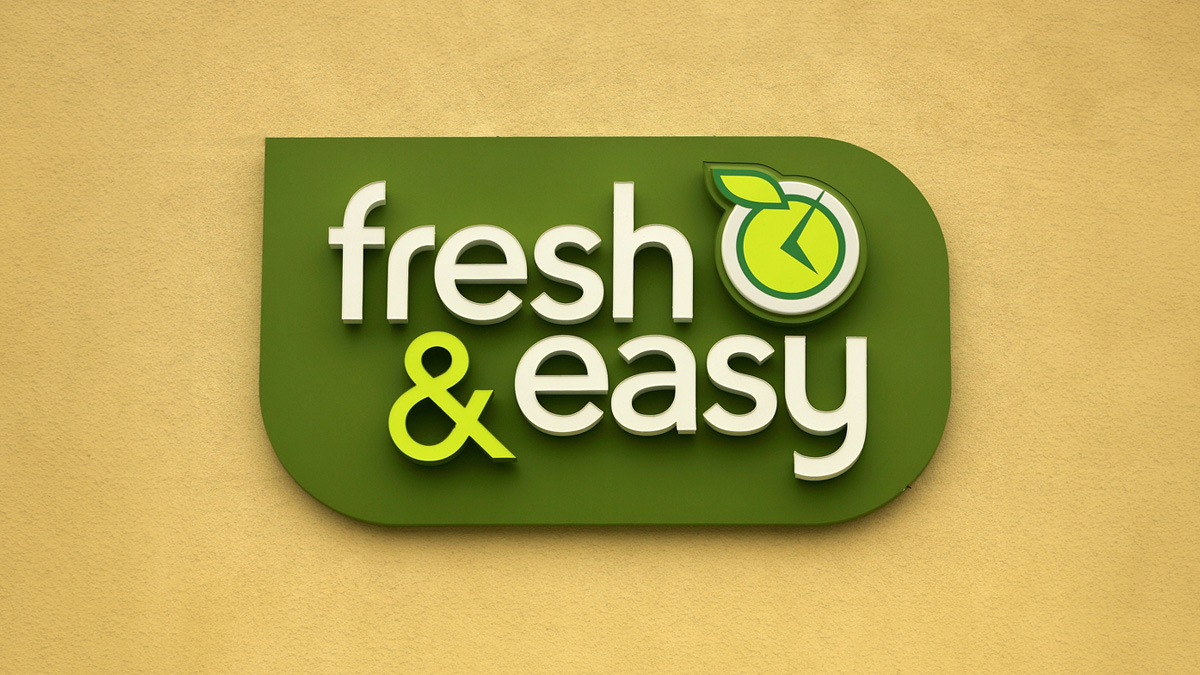How Monzo became a £4bn business
When TS Anil took over as boss of Monzo, the digital bank was criticised for not having a business model. Now it is worth £4bn

You can listen to our podcast interview with TS Anil here.
It is the summer of 2020. Monzo is one of a collection of new digital banks that is growing rapidly in the UK, alongside Revolut and Starling. Its latest financial results show that during the past 12 months, it has more than doubled the number of customers it has from 1.6 million to 3.9 million.
But the results also include some concerning numbers. Annual net losses have widened from £47m to £113m. Analysing the results, the Financial Times said that Monzo was a bank “favoured by those who like to drink £6 Negronis at rooftop bars in south-east London”. But as an actual business, it had a problem.
“Flicking through the results, it’s achingly clear what the problem is,” the FT wrote. “Monzo has yet to find a real business model.” Banks make money by lending money to customers and charging them interest. But Monzo was barely issuing any loans. It had customer deposits of £1.4bn but only made £124m of loans and advances, according to the FT analysis.
Investors also seemed concerned. Monzo had raised £58m of new funding from investors in 2020. This valued the company at £1.25bn, which was impressive for a business that was only founded in 2015, but it was around 40 per cent less than its value in the previous fundraising round. valuation reflected the challenges that Monzo was facing and how the Covid-19 crisis had slowed its growth plans. On top of all this, Tom Blomfield, the co-founder of Monzo, had quit as chief executive. Blomfield would later say he had been struggling with his mental health.
“I was stressed, definitely. I suffered anxiety that impacted my sleep. Did I border on depression at times? I don’t know,” he told The Guardian. Blomfield was not enjoying the challenge of scaling up Monzo from a promising start-up to a big company.
“I stopped enjoying my role probably about two years ago,” he said in a 2021 interview with TechCrunch. “Taking on a bank that’s 3, 4, 5 million customers and turning it into a 10 or 20 million-customer bank and getting to profitability and IPOing it – I think those are huge, exciting challenges. Just honestly not ones that I found that I was interested in or particularly good at.”
This was the backdrop to TS Anil becoming chief executive of Monzo in 2020. Anil initially joined in 2020 as the chief executive of Monzo’s US business after 25 years working in the finance industry around the world for Citi, Capital One, and Visa. He was working in San Francisco, California, for Visa when the opportunity to join Monzo emerged.
“My first impressions of Monzo predate my starting in the company and cut to the heart of why I was excited about joining Monzo in the first instance,” he says. “I had seen from the outside, and in conversations with the Monzo team before I joined, an extraordinary culture, which you couldn’t make up. Customer-centricity and building everything around the customer was a deeply felt belief in the company. The initial tech-stack platform had been built and there was a magical product-market fit.”
After joining in February 2020, Anil’s job quickly changed. By May 2020 he had been named chief executive of the whole business and the world was in lockdown due to the Covid-19 crisis. Anil had been encouraged by Blomfield and Gary Hoffman, Monzo’s chairman, to put himself forward as the next chief executive, but he was in lockdown in California while Monzo was based in London.

“I started my day at two or three in the morning, every single morning because I’m working UK hours,” he recalls. “Everybody’s working from their living rooms or kitchens or studies because the whole world is locked down in March and April of 2020. That was the surreal context when Tom and the board called me about this.
“I knew instinctively that this was the sort of thing I wanted to do. I understood the company enough and the opportunities ahead of us, as well as the challenges. I had spent weeks in the trenches with the team. But I was a continent away.” Anil spoke to his family and made the decision to take the job.
“We made it work and I’ve never looked back. I was massively excited then about the opportunity and still feel that way every morning.” His first task was to immerse himself in the company. “I had to learn people, learn the business, learn our story, learn what had worked for us and learn the domain,” he explains. “I hadn’t worked in a small tech company that was growing so fast. I was learning every day – from junior engineers in the company to senior colleagues on the executive committee.”
Anil learned, as expected, that the business had grown rapidly and had a big opportunity ahead. But he also saw that Monzo needed to move to the next phase of its growth. “I learned what new muscles we needed to build as a company,” he explains.
“This sounds like it’s Monzo’s story, but it’s true for any small start-up that becomes a scale-up and then becomes a truly big and successful company. That journey requires new muscles at every stage.” This included addressing the issue with Monzo’s business model that critics of the bank had identified.
“Building out the business model was a better problem to have than legacy players [the traditional UK high street banks], that have a business model but don’t have any of those other things,” he says. “We’re standing at the cusp of the transformation of the industry because of that. Legacy players have a legacy business model, but they don’t have the technology to succeed, they don’t have the connection with their customers to succeed, and they don’t have the mission, the will, the DNA or the culture that makes them want to solve those problems for customers,”
“I didn’t disagree with the coverage. We were a company that needed to build out its business model. That’s a better place to start than the alternative, which is where the legacy industry was at.” In response, Anil set about developing the business model, while also having the conviction to stand by the company’s mission.
“I said early on at an all-hands or some other meeting that a mission without a business plan is a bumper sticker. It’s a strapline. Anybody can write one. But those two things need to come together. We’ve put a lot of thought and rigour behind that, which is building a business model that is consistent with the mission. It’s not an unsolvable problem. It’s a difficult problem, but not an unsolvable one. If you get it right, the mission and the business plan reinforce each other.
“We knew that for us to really fulfil our mission, we needed to be sustainably profitable. Otherwise, it’s a flash in the pan that goes away. To really build something at scale, the business plan was crucial to that. The more successful we are from a business plan perspective, the more customers we can serve. We can serve them because we are sustainably profitable.
“But if you flip that, how does the mission help the business plan? The mission makes us focus on building products that actually solve customer needs. Our mission makes us solve them in a way that is fair and transparent. Our mission makes us price it in a way that we’re not embarrassed about – I can defend our pricing. Our mission makes us communicate to our customers in a way that they understand the product. We will make good choices for them and therefore we win when they win.
“As warm and fuzzy as it sounds, that is core to the business model. It results in this disproportionate user growth that comes through word of mouth. That has enormous monetary value in an industry where people pay £100 or £200 for every new account opened.”
Two-thirds of Monzo’s new customers every month come via recommendations from friends and family, which is a striking statistic. Monzo has no physical branches, but this has not stopped it being ranked as the best current account provider for customer service in the UK by the Competition and Markets Authority every year since 2020. Anil says Monzo “obsesses” about looking at customer metrics.
“There’s a whole range of quantitative, metric-oriented ways in which we understand that, but this is about more than that, right? It’s about the soul of what we’re trying to do,” he says.
“Our customer connection is one of intimacy. We build our products close to our customers. Every product meeting builds on the customer insight, which could be because we did a piece of research with customers, or we saw how they’re using the app or a community blog post, which, by the way, is a treat to read. It’s an engaged community that doesn’t hesitate to comment on our product roadmap, give us critical feedback about how features in the app are working and what else they want.”
These new products include an investment offering. “When we asked customers in the UK who they would like to buy an investment product from, Monzo made it into the top five. We didn’t even have a product. That trust that Monzo is going to do the right thing is unparalleled across industries, let alone in the world of financial services and banking.”
Under Anil, Monzo has grown up. Its latest results show how much progress has been made since he took charge. Monzo now has more than 10 million customers, up from 3.9 million in 2020. It generated revenues of £880m in the 12 months to March 31 2024, more than double the previous year. Revenue is now coming from subscriptions for premium accounts, investment and savings products, fees on transactions, and an uptick in lending to consumers and businesses.
Monzo also made a pre-tax profit of £15.4m in the 2023/24 financial year – its first annual profit. Investors have backed Monzo with another £500m of funding in 2024. This valued the bank at £4.1bn, nearly quadruple the valuation when Anil joined. There is more to come. The traditional UK banks still account for 85 per cent of the consumer market and most households still use them for their main bank account, into which their salaries are paid.
But Anil thinks it is too late for the traditional banks to catch up with Monzo’s technology. “It is that confluence of legacy tech, legacy business model, legacy mindset,” he says of the traditional banks. “Our technology spend is a fraction of what a typical large incumbent bank will spend in the UK, yet we get 10 times the value of that spend.”
Expanding overseas is also an option for Monzo. As is floating on the stock market. “We will make a great public company one day,” Anil says. “There’s going to be a time for us to do it. I think it’s too early to speculate on that. We want to make sure we continue to scale the business and make a great story to the public markets.”
You can listen to our podcast episode with TS Anil here:



